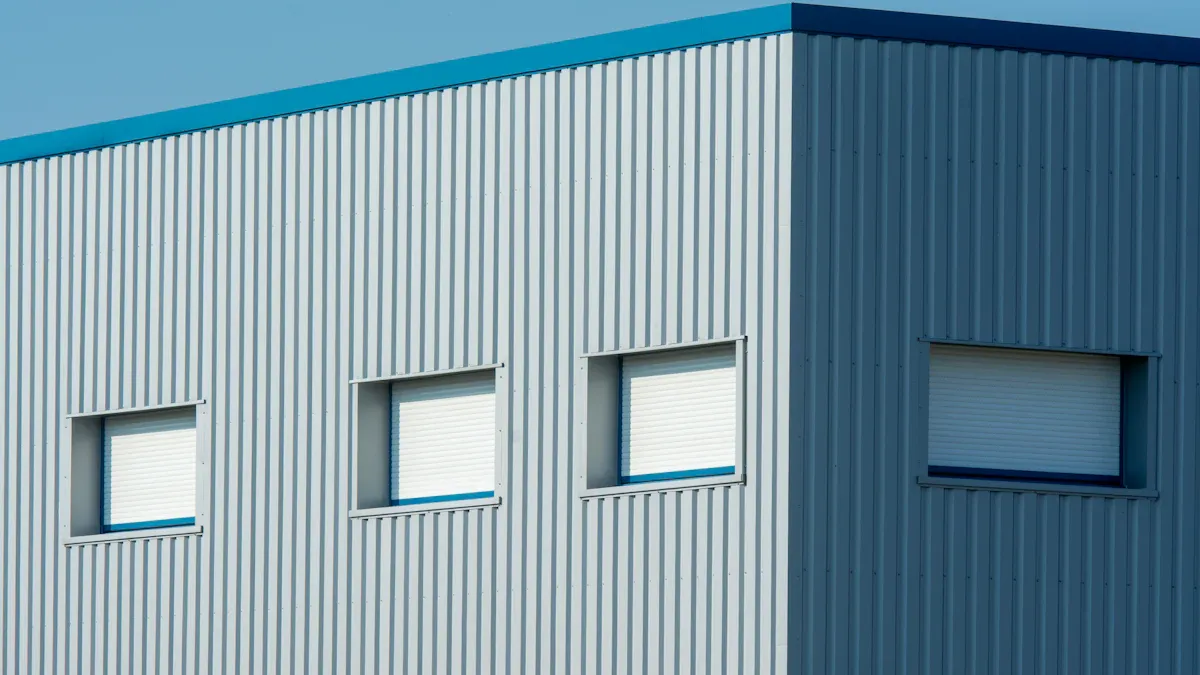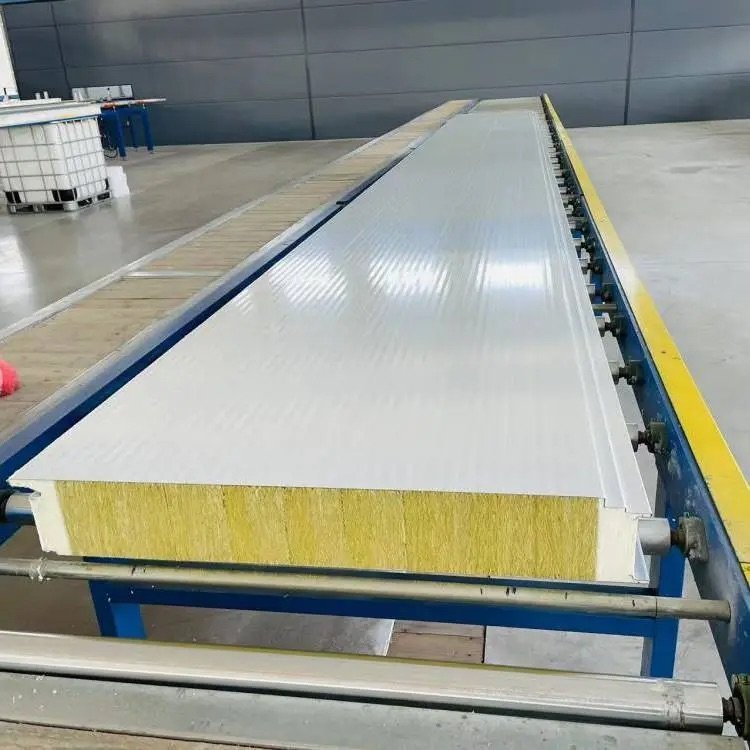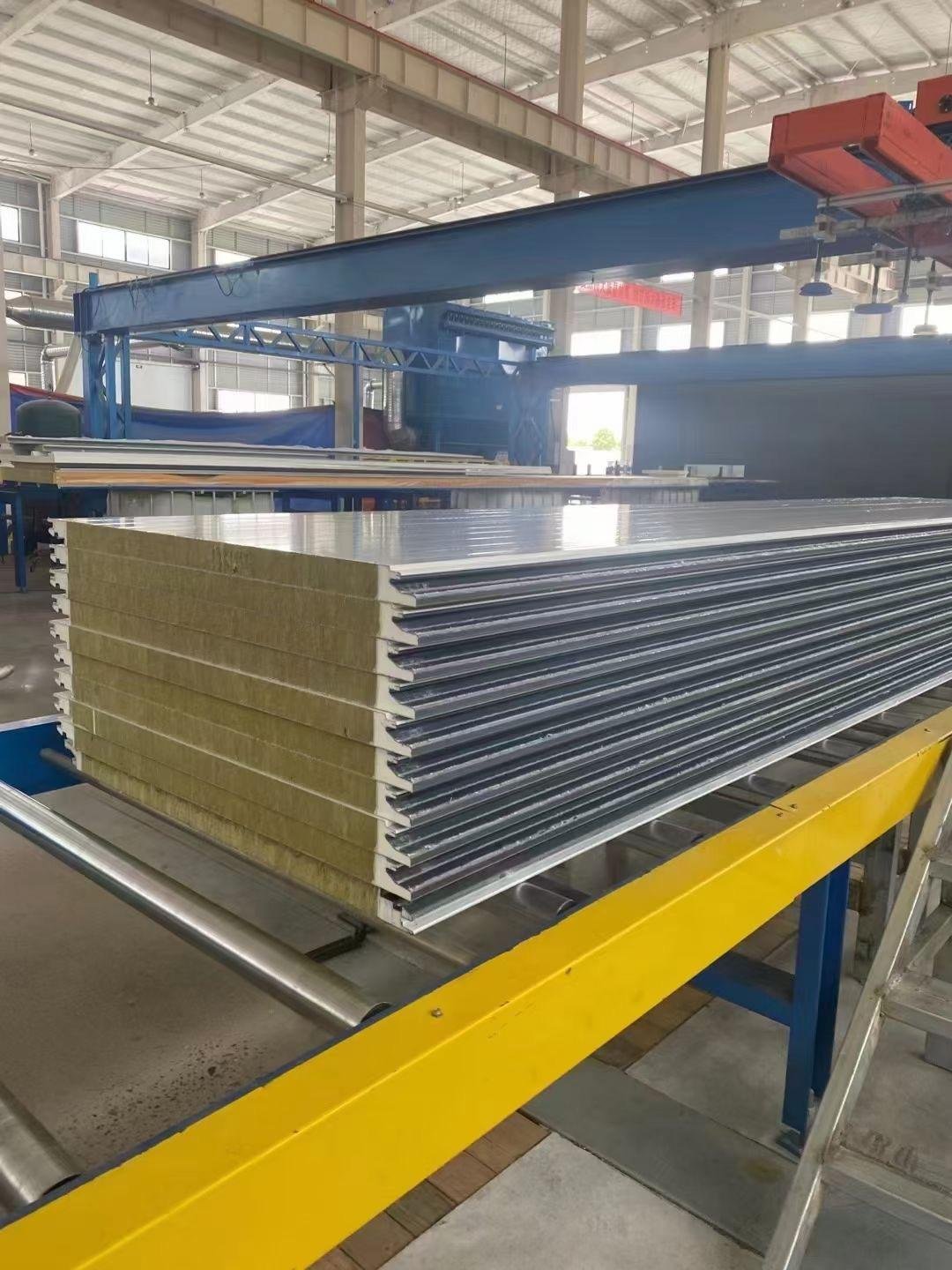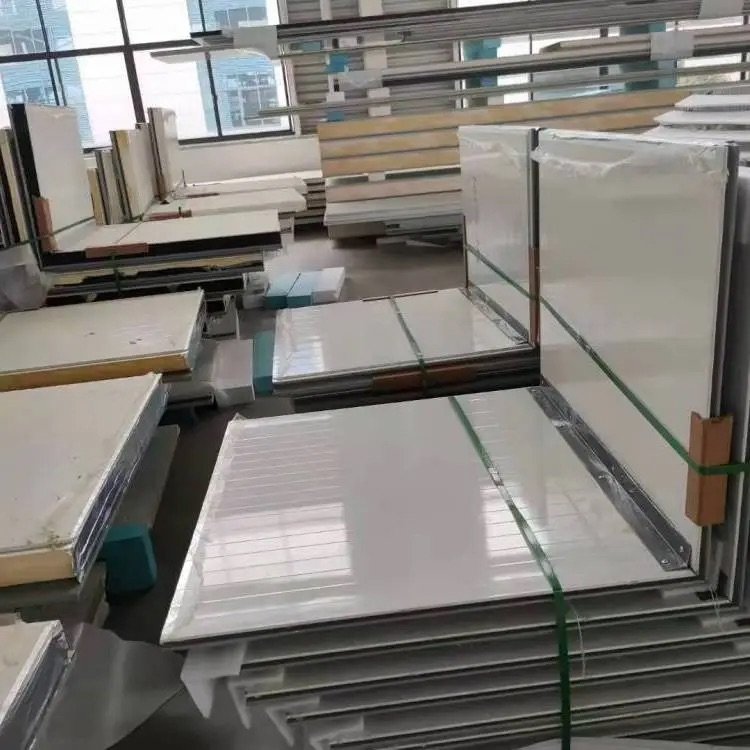
PIR (Polyisocyanurate) and PU (Polyurethane) sandwich panels are popular choices in construction for their insulation and structural properties. Both panels consist of a foam core sandwiched between two metal skins, but their performance varies significantly.
PIR panels excel in fire resistance due to their ability to form a carbonized layer when exposed to flames, which shields the inner layers. They also maintain stability at higher temperatures and produce less smoke during combustion.
PU panels, while offering excellent thermal insulation, require more flame retardants to achieve fire resistance.
Understanding the difference between PIR and PU panels helps you choose the right material for your project, ensuring safety, efficiency, and cost-effectiveness.
Key Takeaways
PIR panels are better at stopping fire by creating a shield, making buildings safer.
PU panels keep heat in well and cost less, great for tight budgets.
Think about your project’s weather needs; PIR panels handle water better, while PU panels work for normal use.
Check what your project needs, like fire safety or keeping heat in, to pick the best panel for lasting use.
Talk to experts to pick the right panel, balancing cost and performance for your building.
Understanding PIR and PU sandwich panels
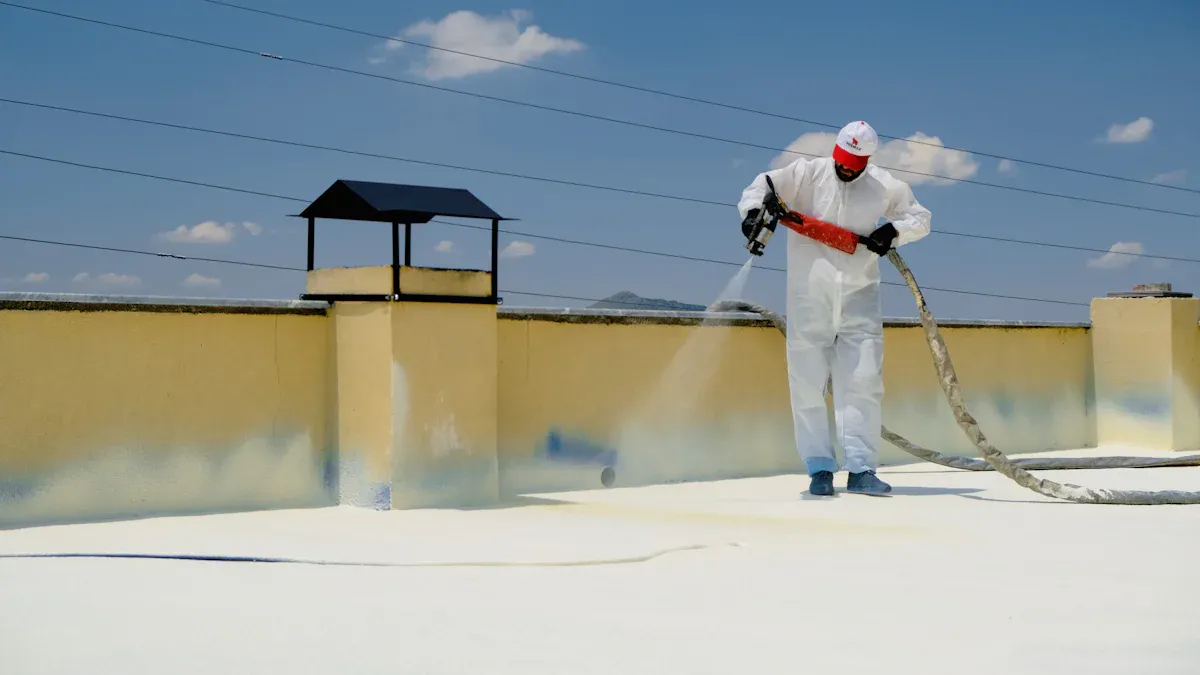
What is a PIR sandwich panel?
A PIR sandwich panel consists of a polyisocyanurate foam core placed between two metal sheets. This type of panel is known for its excellent fire resistance and thermal stability. When exposed to fire, the PIR foam forms a carbonized layer that protects the inner structure. It also generates less smoke compared to other materials, making it a safer option for buildings.
PIR panels are highly efficient in insulation due to their low thermal conductivity, which can go as low as 0.018 W/mK. They also perform well in extreme temperatures, withstanding up to 205 degrees Celsius. Their closed-cell structure ensures minimal water absorption, enhancing durability.
Property/Benefit | Description |
|---|---|
Thermal Stability | Maintains stability at high temperatures, improving fire resistance. |
Fire Resistance | Forms a protective carbonized layer during combustion. |
Smoke Generation | Produces less smoke due to lower flame retardant concentration. |
Water Absorption | Virtually waterproof due to its closed-cell structure. |
What is a PU sandwich panel?
A PU sandwich panel features a polyurethane foam core sandwiched between two metal skins. These panels are widely used for their superior thermal insulation and lightweight design. They are ideal for energy-efficient buildings, cold storage, and industrial applications.
PU panels have a thermal conductivity ranging from 0.022 to 0.026 W/mK, ensuring excellent insulation. They are available in various thicknesses, from 40 mm to over 200 mm, allowing customization for different projects. While PU panels require flame retardants to improve fire resistance, they meet B1/B2 fire safety standards.
Specification | Value/Description |
|---|---|
Thermal Conductivity (λ-value) | |
Panel Thickness | Ranges from 40 mm to over 200 mm. |
Density | Typically 35-45 kg/m³, offering lightweight strength. |
Fire Behavior | Meets European fire safety standards. |
Key features of PU sandwich panels by Materix
Materix PU sandwich panels stand out for their high performance and versatility. These panels provide exceptional thermal insulation, reducing energy consumption and maintaining temperature stability. Their lightweight yet durable design makes installation quick and easy.
Key features include:
Thermal Insulation: Ultra-low thermal conductivity of ≤ 0.024 W/(m·K).
Fire Resistance: Meets B1/B2 fire safety standards with enhanced flame-retardant properties.
Customization: Available in various thicknesses and coatings to suit specific project needs.
Durability: Resistant to weather and moisture, ensuring long-lasting performance.
Materix panels are manufactured using advanced CNC cutting and lamination techniques, ensuring precision and quality. They are ideal for industrial buildings, cold storage, and modular housing.
For more details, explore resources like How to Evaluate the Thermal Insulation Performance of Sandwich Panels and Strength and Durability of PU Sandwich Panels.
Key differences between PIR and PU sandwich panels
Fire resistance: The difference between PIR and PU
Fire resistance is one of the most critical factors when comparing PIR and PU sandwich panels. PIR panels outperform PU panels in this area due to their unique chemical structure. PIR foam forms a protective carbonized layer when exposed to flames, which slows down the spread of fire. This feature allows PIR panels to achieve a fire resistance rating of B1, while PU panels typically meet the B2 standard unless enhanced with additional flame retardants.
PIR panels also produce less smoke during combustion, making them a safer choice for buildings where fire safety is a priority. In contrast, PU panels require more flame retardants to achieve similar results, which can lead to higher smoke generation.
Property | PIR Foam | PU Foam |
|---|---|---|
Fire Resistance | Generally B2 grade, can reach B1 | Generally B3 grade, can reach B2 |
Smoke Generation | Lower | Higher |
Thermal insulation performance
Both PIR and PU panels provide excellent thermal insulation, but PIR panels have a slight edge. PIR foam can achieve a thermal conductivity as low as 0.018 W/mK, making it one of the most efficient insulation materials available. PU foam, on the other hand, typically ranges from 0.022 to 0.026 W/mK. This difference means PIR panels can offer better energy efficiency, especially in extreme climates.
If you prioritize reducing energy costs, PIR panels might be the better option. However, PU panels still deliver reliable insulation and are widely used in energy-efficient buildings, cold storage, and industrial applications.
PIR foam: Thermal conductivity as low as 0.018 W/mK.
PU foam: Thermal conductivity ranges from 0.022 to 0.026 W/mK.
Density and structural properties
The density of the foam core affects the strength and durability of sandwich panels. PIR foam typically has a bulk density of 45-55 kg/m³, making it slightly denser and more robust than PU foam, which ranges from 35-45 kg/m³. This higher density contributes to PIR panels’ superior structural stability and resistance to deformation under load.
PIR panels also perform better in high-temperature environments, remaining stable up to 205°C. PU panels, in comparison, are suitable for temperatures below 110°C. This makes PIR panels a better choice for applications requiring high-temperature resistance.
Property | PU Foam | PIR Foam |
|---|---|---|
Bulk Density | 35-45 kg/m³ | 45-55 kg/m³ |
Temperature Range | below 110 °C | up to 205 °C |
Choosing between PIR and PU panels depends on your project’s specific needs. If fire resistance and thermal stability are top priorities, PIR panels offer clear advantages. However, PU panels remain a versatile and cost-effective option for many applications.
Water absorption and moisture resistance
Water absorption and moisture resistance are critical factors when selecting sandwich panels for construction. These properties directly affect the durability and performance of the panels in humid or wet environments.
PIR sandwich panels excel in moisture resistance due to their closed-cell structure. This design prevents water from penetrating the foam core, making them virtually waterproof. You can rely on PIR panels for applications where exposure to water or high humidity is a concern. Their ability to resist moisture also enhances their thermal insulation over time, as water absorption can degrade insulation performance.
PU sandwich panels, while offering good moisture resistance, do not match the performance of PIR panels in this area. The polyurethane foam core has a slightly more open-cell structure, which can allow minimal water absorption under prolonged exposure. However, PU panels still perform well in most standard applications, especially when combined with protective coatings or sealants.
Key differences in water absorption:
PIR panels: Virtually no water absorption due to their closed-cell structure.
PU panels: Minimal water absorption, but protective measures can improve performance.
When choosing between PIR and PU panels, consider the environmental conditions of your project. For areas prone to high humidity or water exposure, PIR panels offer a clear advantage. However, PU panels remain a reliable choice for less demanding environments.
Cost comparison
Cost is often a deciding factor in construction projects. Understanding the price differences between PIR and PU sandwich panels helps you make an informed decision.
PIR sandwich panels typically cost more than PU panels. The higher price reflects their superior fire resistance, thermal insulation, and moisture resistance. If your project demands top-tier performance in these areas, the additional investment in PIR panels can provide long-term value by reducing maintenance and energy costs.
PU sandwich panels, on the other hand, are more budget-friendly. They deliver excellent thermal insulation and durability at a lower price point. For projects with tight budgets or less stringent fire and moisture resistance requirements, PU panels offer a cost-effective solution without compromising on quality.
Cost considerations:
PIR panels: Higher initial cost, but long-term savings through enhanced performance.
PU panels: Lower upfront cost, ideal for projects with standard requirements.
Balancing cost with performance is essential. Evaluate your project’s specific needs to determine whether the added benefits of PIR panels justify the higher expense or if PU panels meet your requirements at a more affordable price.
Applications of PIR and PU sandwich panels

Where PIR panels are commonly used
PIR sandwich panels are highly valued in industries where fire resistance and thermal efficiency are critical. Their ability to maintain stability under high temperatures makes them a preferred choice for specific sectors.
Industry Sector | Application Description |
|---|---|
Food Processing | Used in the construction of food processing units to maintain hygienic and controlled environments essential for food safety and quality. |
Warehousing | Widely used in warehouse construction due to thermal efficiency, lightweight, and ease of installation, driven by the growth of e-commerce. |
In addition to industrial applications, PIR panels are becoming increasingly popular in residential and commercial buildings. They help reduce energy costs while ensuring safety.
Sector | Application Details |
|---|---|
Residential | |
Commercial | Increasing use in offices and retail spaces for energy efficiency and cost reduction. |
Agricultural | Gradual adoption for barns and storage units to maintain temperature and humidity conditions. |
PIR panels are ideal for projects requiring superior fire resistance and long-term energy savings.
Where PU sandwich panels excel
PU sandwich panels excel in applications where thermal insulation and cost-effectiveness are priorities. These panels are widely used in:
Buildings: PU panels provide excellent insulation, reducing energy costs by $0.75 to $1.25 per square foot annually.
Cold Storage: Their high R-values and ability to perform in extreme temperatures make them perfect for cold storage facilities.
Modular Structures: Lightweight and easy to install, PU panels are ideal for modular housing and temporary structures.
Their versatility and affordability make them a reliable choice for various construction needs.
Choosing the right panel for your project
Selecting the right panel depends on your project’s specific requirements. If fire resistance and moisture control are critical, PIR panels offer unmatched performance. For projects focused on thermal insulation and budget-friendly solutions, PU panels provide excellent value.
Tip: Evaluate your project’s environment, energy efficiency goals, and safety standards before making a decision. Consulting with experts can help you choose the most suitable option for your needs.
Understanding the difference between PIR and PU sandwich panels helps you make informed decisions for your construction projects. PIR panels excel in fire resistance and moisture control, while PU panels stand out for their affordability and excellent thermal insulation. PU sandwich panels, like those from Materix, offer energy efficiency, durability, and customization options, making them a versatile choice for various applications.
Evaluate your project’s specific requirements, such as fire safety, insulation needs, and budget constraints. Consulting with experts ensures you select the most suitable panel for long-term performance and value.
FAQ
1. What are the main differences between PIR and PU sandwich panels?
PIR panels excel in fire resistance and moisture control, while PU panels offer superior thermal insulation and affordability. PIR panels form a protective carbonized layer during combustion, whereas PU panels require flame retardants to enhance fire safety. Choose based on your project’s specific needs.
2. How do I choose the right panel for my project?
Evaluate your project’s requirements, such as fire safety, insulation performance, and budget. PIR panels suit high fire resistance and moisture-prone environments. PU panels work well for energy-efficient and cost-effective solutions. Consulting experts ensures the best choice for long-term performance.
3. Are PU sandwich panels suitable for cold storage?
Yes, PU panels are ideal for cold storage. Their low thermal conductivity (≤ 0.024 W/(m·K)) ensures excellent insulation, maintaining stable temperatures. They also come in customizable thicknesses, making them perfect for cold storage facilities requiring precise thermal control.
4. Can I customize the size and coating of PU panels?
Yes, PU panels from Materix offer full customization. You can select specific sizes, thicknesses (40mm to 200mm), and coatings to meet your project’s unique requirements. This flexibility ensures the panels fit seamlessly into your construction plans.
5. Do PU panels meet fire safety standards?
Yes, PU panels meet B1/B2 fire safety standards. They include enhanced flame-retardant properties, ensuring reliable fire resistance. For projects requiring higher fire safety, you can opt for additional protective measures or consult with experts for tailored solutions.
Tip: Always verify fire safety certifications before purchasing panels for your project.

